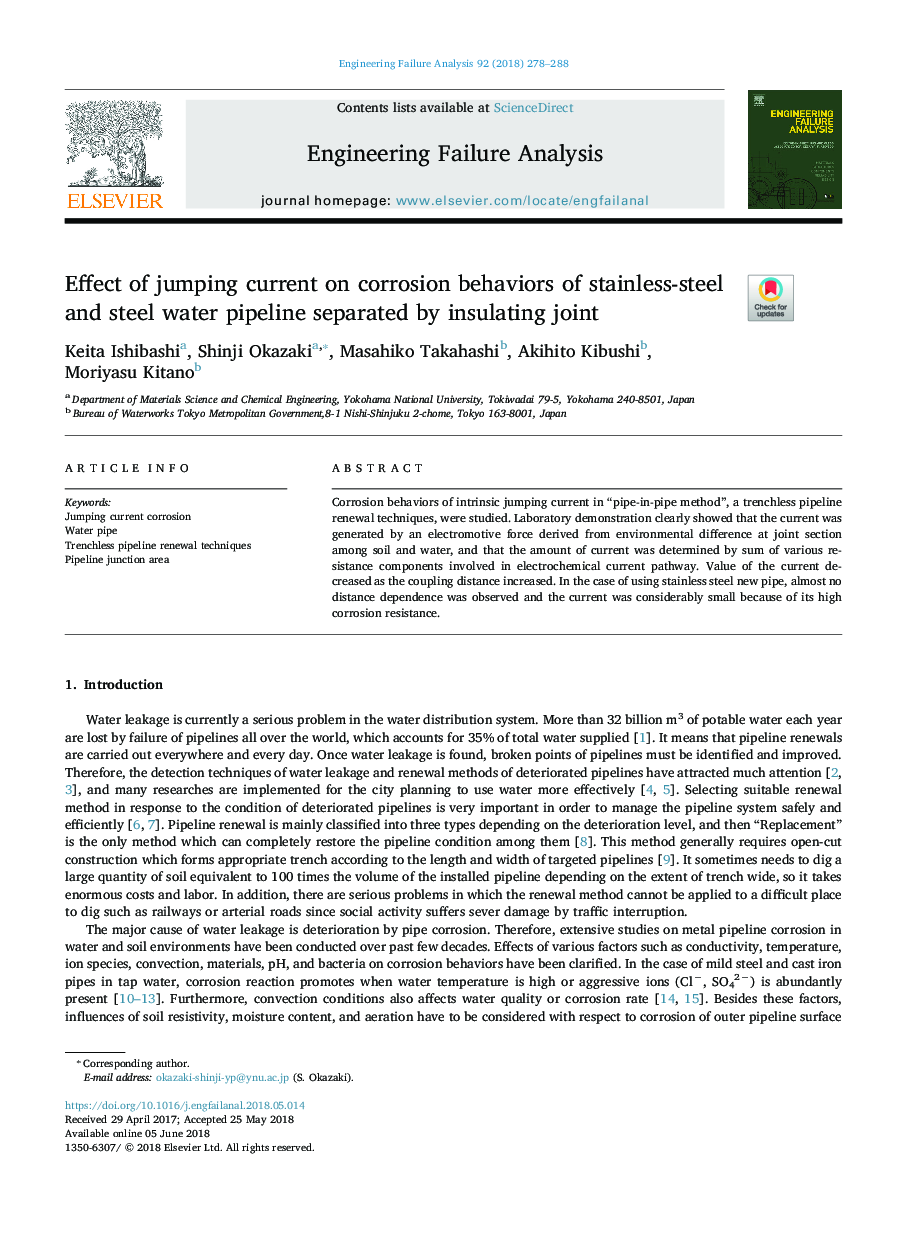| Article ID | Journal | Published Year | Pages | File Type |
|---|---|---|---|---|
| 7167097 | Engineering Failure Analysis | 2018 | 11 Pages |
Abstract
Corrosion behaviors of intrinsic jumping current in “pipe-in-pipe method”, a trenchless pipeline renewal techniques, were studied. Laboratory demonstration clearly showed that the current was generated by an electromotive force derived from environmental difference at joint section among soil and water, and that the amount of current was determined by sum of various resistance components involved in electrochemical current pathway. Value of the current decreased as the coupling distance increased. In the case of using stainless steel new pipe, almost no distance dependence was observed and the current was considerably small because of its high corrosion resistance.
Keywords
Related Topics
Physical Sciences and Engineering
Engineering
Industrial and Manufacturing Engineering
Authors
Keita Ishibashi, Shinji Okazaki, Masahiko Takahashi, Akihito Kibushi, Moriyasu Kitano,
